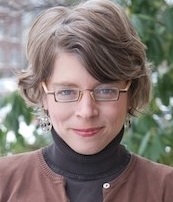By Rachel Seidman, Program Committee Co-Chair
A century ago, Joe Gould, a bohemian from Greenwich Village, began writing down anything that anyone ever said to him, especially in Harlem. Gould, who coined the term “oral history,” founded an oral history association in the 1920s. He wrote an extraordinarily long book called The Oral History of Our Time, said to be the longest book ever written.
In 1931, Gould wrote to leading American historians, very likely including Allan Nevins at Columbia University, explaining what he was doing. “My book is very voluminous,” he wrote. “It will have future value as a storehouse of information. I imagine that the most valuable sections will be those which deal with groups that are inarticulate such as the Negro, the reservation Indian, and the immigrant. It seems to me that the average person is just as much history as the ruler or celebrity.”
When Gould died in 1957, no one could find the manuscript, and in 1964, Joseph Mitchell, a New Yorker writer, argued, in a beautiful story called “Joe Gould’s Secret” that The Oral History of Our Time never existed: Gould had made it up.
Curious, and unpersuaded, Jill Lepore, Harvard historian and New Yorker writer, went to look for it, and found that Joe Gould had a very different secret, involving a woman who was the most important artist of the Harlem Renaissance, the sculptor Augusta Savage. The story Lepore tells in her latest book, Joe Gould’s Teeth, unravels a mystery, but also raises the deep ethical questions that lie at the heart of oral history. Gould may be the founder of oral history, but he also haunts it.
Lepore, also the author of The Secret History of Wonder Woman and numerous other award-winning books, will explore Joe Gould’s secret in her OHA keynote talk on Thursday, Oct. 5 at 12:30 p.m.
